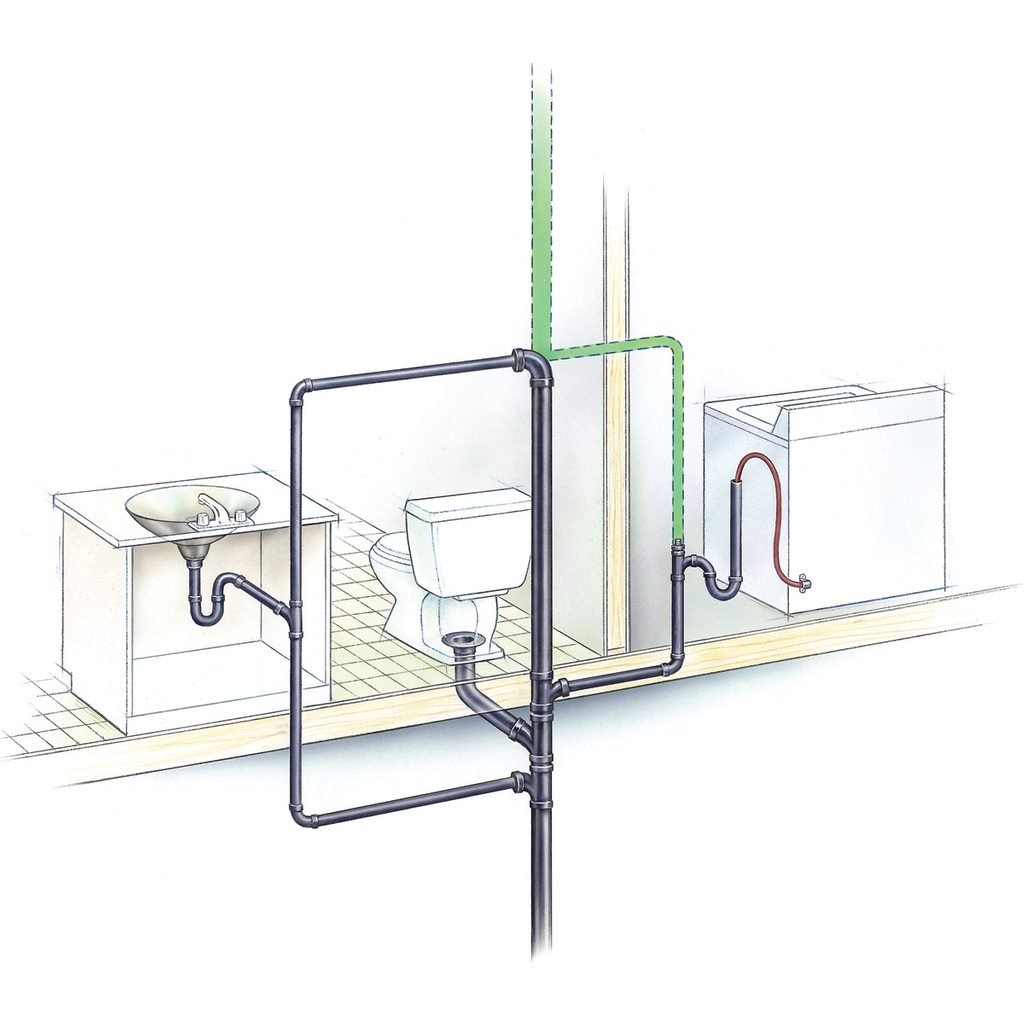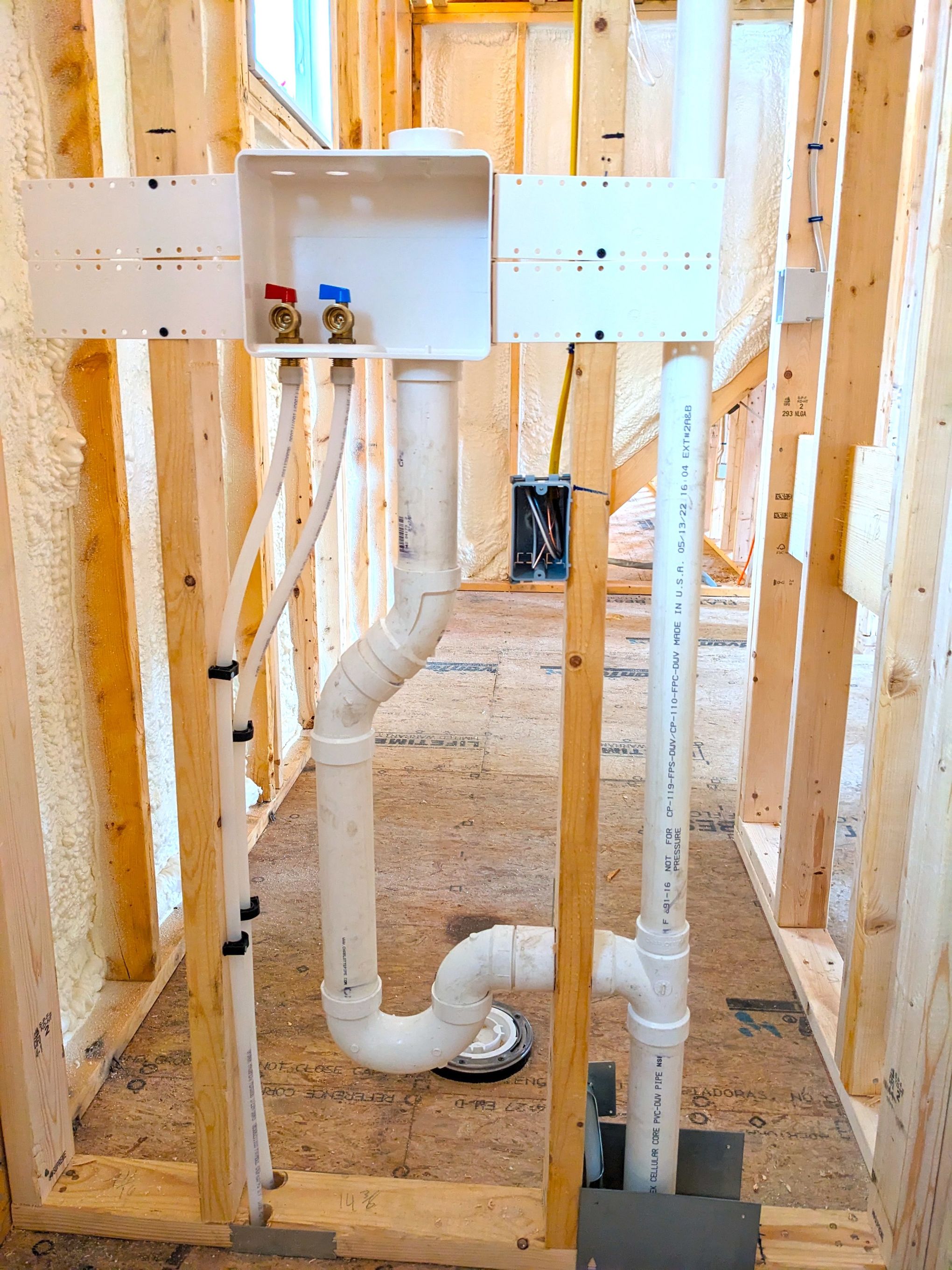The Function of Adequate Ventilation in Maintaining Plumbing Systems
The Function of Adequate Ventilation in Maintaining Plumbing Systems
Blog Article
We've found this article relating to What Is a Plumbing Vent and Why Is It Important directly below on the net and think it made good sense to write about it with you over here.

Correct air flow in pipes systems is usually neglected, yet it is important for maintaining the performance and security of your home's plumbing. Ventilation aids regulate atmospheric pressure, stop the accumulation of hazardous gases, and make sure the reliable elimination of waste. In this overview, we will certainly discover the value of correct pipes ventilation, how it functions, and the benefits it offers your plumbing system.
Understanding Ventilation in Pipes
Air flow in plumbing refers to the network of pipelines that permit air to move via the drain system. These vents serve numerous objectives, consisting of controling air pressure within the pipelines, avoiding sewage system gases from entering the home, and helping in the smooth flow of wastewater.
Just How Ventilation Works in Pipes Equipments
Atmospheric Pressure Law
Proper air flow maintains balanced air pressure within the pipes system. When water moves via pipes, it displaces air. Without appropriate air flow, this variation can create adverse stress, causing slow drains or siphoning of water from catches, which can create unpleasant odors to leak into the home.
Preventing Sewer Gas Accumulation
One of the most vital features of plumbing vents is to prevent sewer gases, such as methane and hydrogen sulfide, from accumulating within the home. These gases can pose serious health dangers and are highly combustible. Vent pipelines allow these gases to get away safely outside.
Assisting in Waste Removal
Air flow assists in the efficient removal of wastewater by protecting against airlocks in the water drainage system. When air can move easily with the vents, it allows water and waste to move efficiently with the pipes, minimizing the threat of blockages and back-ups.
Kinds Of Plumbing Vents
Key Heap Vent
The primary stack air vent, also called the air vent pile, is the main vent in a plumbing system. It prolongs from the major drain line up with the roofing system, enabling gases to get away and fresh air to go into the system.
Branch Vent
Branch vents link to the major stack air vent and offer private fixtures, such as sinks, bathrooms, and showers. These vents make sure that each component has sufficient air flow to operate properly.
Air Admission Valve (AAV).
An Air Admittance Valve (AAV) is a one-way shutoff that permits air to enter the plumbing system without the demand for a typical air vent pipeline expanding through the roofing system. AAVs are frequently used in renovations or areas where installing a standard vent is impractical.
Signs of Poor Ventilation in Pipes.
Slow Draining Fixtures.
If your sinks, bathtubs, or bathrooms are draining gradually, maybe an indication of poor air flow. Inadequate air circulation can develop a vacuum cleaner effect, making it hard for water to drain effectively.
Gurgling Seems.
Gurgling audios originating from drains are typically a result of air being drawn through water catches due to adverse pressure in the pipelines. This is a clear indicator of not enough ventilation.
Undesirable Smells.
Drain smells inside your home are a red flag that your plumbing system is not properly aerated. This can imply that sewage system gases are not being appropriately aired vent outside, bring about potentially unsafe conditions.
Common Air Flow Blunders.
Poor Vent Sizing.
Making use of small vent pipes can lead to poor air circulation and pressure inequalities in the system. It's vital to make use of vents that meet the specific needs of your plumbing system.
Improper Vent Placement.
Positioning vents too much from the fixtures they serve can decrease their effectiveness. Correct positioning makes certain that air can stream freely and successfully with the system.
Ignoring Code Requirements.
Building ordinance supply particular standards for plumbing air flow. Neglecting these codes can result in a system that stops working to function appropriately and may result in expensive repairs or carcinogen.
Benefits of Appropriate Ventilation.
Boosted System Performance.
Effectively aerated pipes systems run extra successfully, with fewer obstructions, faster draining, and much less stress on the pipes. This efficiency expands the life-span of the plumbing system.
Improved Air Top Quality.
By protecting against sewer gases from entering your home, proper ventilation adds to better indoor air quality, making your living environment healthier and more comfortable.
Protecting Against Water Damages.
Ample air flow assists avoid water from being siphoned out of traps, which can result in sewage system gases going into the home and causing water damages gradually.
Actions to Make Sure Proper Ventilation.
Consulting Plumbing Codes.
Always seek advice from neighborhood pipes codes when creating or customizing your plumbing system. These codes give the needed standards for proper airing vent and guarantee your system satisfies security requirements.
Routine Inspection and Upkeep.
Normal examinations can aid identify potential air flow problems prior to they come to be major troubles. Maintenance tasks, such as cleaning up vent pipelines and checking for blockages, are vital for maintaining the system in good working order.
Specialist Installation.
For brand-new setups or major alterations, it's wise to employ a professional plumbing. They have the experience to make certain the air flow system is appropriately made and mounted according to code.
Final thought.
Correct ventilation is an essential part of any pipes system, making sure that it operates successfully and safely. By understanding the relevance of air flow, identifying the indicators of poor air flow, and taking actions to keep your system, you can avoid pricey issues and safeguard your home's air top quality.
4 Things You Should Know About Your Plumbing Vents
What Plumbing Vents Are
Also called a vent stack, a plumbing vent is a vertical pipe attached to your drain line that runs through your roof. The plumbing vent pipe, or plumbing air vent, removes gas and odors from your plumbing system and allows fresh air to enter the pipes, helping the water to flow out of the drain pipes.
What Plumbing Vents Do
Plumbing vents have two basic functions. One of which is to allow unpleasant smelling wastewater and sewer gasses to escape your plumbing system instead of entering your home. Plumbing vent pipes are typically located on roofs, away from windows, to ensure the fumes exit the home completely.
The other function of the plumbing vent is to move fresh air into your plumbing system. This helps move water through every plumbing fixture in your house, like toilets and sink drains. Think of the way in which you need to let a little air into the bottle as you pour soda in order to make the drink flow smoothly.
Different Types of Plumbing Vents
True vent: This is the most common vent option. In simplest terms, a true vent is a vertical pipe attached to your drain line that exits through the roof. They often function as the main vent that other fixtures can connect to. Re-vent pipe or auxiliary vent: Attached to the drain line near specific plumbing fixtures, re-vent pipes run up and over to connect to the main vent. Common vent: Two plumbing fixtures installed on opposite sides of a wall are typically tied into the vent stack using something known as a sanitary cross. Wet vent: This venting option operates as a drain pipe and a vent at the same time. Wet vent drainage systems drain water from one fixture while venting the air from another. Although they’ve been used for over 100 years, wet vent systems have only recently been added to the plumbing code in many areas. If you’re planning on installing one in a bathroom remodel, make sure you check your local code prior to construction. Loop vent: For free-standing fixtures like kitchen island sinks, loop vents are ideal. These vent pipes run under the floor, rise from the P-trap, and create a loop inside the cabinet sink. Air admittance valve: An AAV is a one-way mechanical valve typically installed at the site of the plumbing fixture. AAVs allow venting to occur without having to tie into a larger venting system. They’re ideal for venting fixtures where you aren’t able to easily connect to an existing vent system. Common Plumbing Vent Issues
Although vent pipes typically don’t have water flowing through them, they’re still subject to many typical plumbing issues. For example, clogs are one of the most common problems associated with sewer vent pipes. If your vent pipe gets clogged, all of your plumbing fixtures tied into the vent stack will be affected.
A sink with a slow drain that bubbles and gurgles or a strong sewage smell around your toilet are both indicators that your toilet vent pipe is clogged. Because most vent pipes exit through the roof, old leaves, twigs or even a bird’s nest could be clogging the pipe.
Clogs in your vent pipe system cause a buildup of negative pressure, meaning that water won’t be able to flow out of your home very well. It’s similar to putting your finger over the opening of a straw to trap water inside. When you remove your finger, the water is able to flow out of the straw.
If you suspect you have any blockage in your vent, make sure you have a professional come examine the situation. Left unchecked, a blocked air vent can lead to other costly repairs, like leaks and sediment buildup.
Under Pressure
Pipe vents are essential aspects of a home’s plumbing system. Owning a home means learning about all sorts of things you never put much thought into before. But by understanding as much as you can about the important systems of your home, you can keep those budgets intact and those anxiety levels low.
https://www.homeserve.com/en-us/blog/home-improvement/plumbing-vents/

As a fervent reader on Essential Plumbing Vent Pipes: Understanding Their Role, I imagined sharing that section was a good thing. Be sure to set aside a second to share this blog post if you enjoyed reading it. Bless you for your time. Revisit us soon.
Estimate Report this page